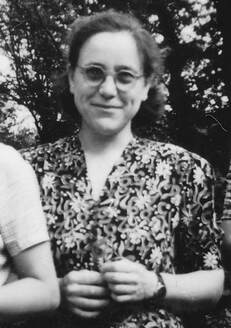 Engineer of the Week No. 70: Johanna Weber Dr. Rer. Nat. (8 August 1910 – 24 October 2014) On her 109th birthday we remember aerodynamic engineer Johanna Weber. Dr Johanna Weber, was one of the foremost aerodynamicists of her generation and contributed significantly to the design of the Concorde and other supersonic swept-wing aircraft. Born in Düsseldorf, Germany she lost her father in the First World War, making her eligible for financial support, so she could attend a convent school and then go on to university. She graduated Dr. rer. nat. (a first degree but to doctoral level, in natural philosophy or physics) with first-class honours in 1935. Despite teacher training her refusal to join the Nazi Party excluded her from such work but, rather oddly, not from work in armaments. She first worked for the massive Krupp company in Essen as a researcher in ballistics doing mathematical computations using mechanical calculators. In 1939 she moved to Göttingen’s Aerodynamics Research Institute (Aerodynamische Versuchsanstalt Göttingen) to begin a lifelong collaboration with Dietrich Küchemann on aerodynamics which, amongst a mass of other significant publications, led to their seminal book,Aerodynamics of Propulsion. At the end of the War, senior people from the Royal Aircraft Establishment Farnborough were sent to Germany under Operation Surgeon to survey German aeronautical resources and research. In addition to acquiring many wind tunnels, they also recruited Küchemann and persuaded Weber, probably on the recommendation of Hilda Lyon who was part of the RAE team sent to Germany wrote the report covering their work. They arrived in 1946 and until 1953 were ‘enemy aliens’, on repeat 6-month contracts, until they then were naturalised as UK citizens. From then on Weber lived with the Küchemann family until eventually she bought the house next to theirs. Her initial work at RAE was in Frances Bradfield’s Low Speed Wind Tunnels division, on air intake cowlings for jet engines, on which she co-authored a series of papers. The work for which she is more remembered today was on wing design, for which she showed that a thin delta wing could generate sufficient lift to for take-off and landing for supersonic planes, and was implemented in the iconic Concordes. Her design work was also involved in wing shape for both the VC10 airliner and the more recent Airbus A300B. She retired from the RAE in 1975 at the grade of Senior Principal Scientific Officer, but still did some consultancy with them for a while, whilst also pursuing personal interests in geology and psychology. She never married and helped financially support members of her family who remained in Germany. For a more detailed technical review of her work, see John Green’s obituary for the Royal Aeronautical Society: https://www.aerosociety.com/news/obituary-dr-johanna-weber/
0 Comments
Leave a Reply. |
- Home
- Electric Dreams
- All Electric House, Bristol
- Top 100 Women
- Engineer of the Week
- The Women
- Timeline
- WES History
- EAW
- Teatowels For Sale
- 50 Women in Engineering
- Museum Trails
- Waterloo Bridge
- History Links
- Blue Plaques
- Virtual Blue Plaques
- Career and Inspiration Links
- Contact
- Outreach
- Photo Gallery
- Bluestockings and Ladders
